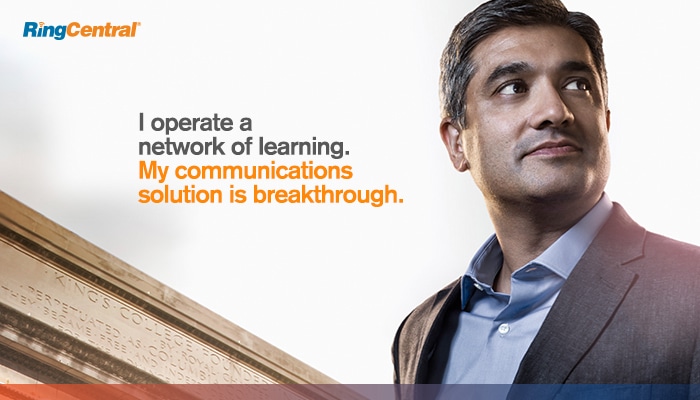Highlights:
- In an increasingly digital world, teaching digital citizenship to students is more important than ever.
- Digital citizenship involves much more than simply learning digital security tactics.
- Age-appropriate lessons can help students become digital citizens most effectively.
2020 catapulted millions of people into the digital world, and students felt the effects more keenly than almost anyone else. That trend has not slowed with the advent of 2021. In fact, recent legislation such as the American Rescue Plan Act may well accelerate this shift, allocating significant funds to Internet and broadband access.
Naturally, educational institutions are paying greater attention to issues of digital citizenship.
👩🏻🏫💻📚 Educators play a critical role in teaching students positive online practices, but how early is too early to begin? Read our guide to find out.
What is digital citizenship?
Digital citizenship is defined by ISTE standards as the ability for students to “recognize the rights, responsibilities and opportunities of living, learning and working in an interconnected digital world.”
In other words, it’s about acting responsibly when you use technology to interact with society in any capacity.
Unified communications platforms for digital citizenship
It’s easy to see how this would be beneficial to students’ educational growth, but how can institutions use unified communications platforms to realize these goals in a classroom setting? Here are some ways.
1. Know the history
Digital citizenship has undergone a significant evolution throughout its relatively short lifespan.
Originally, issues of digital citizenship often revolved around privacy and security—protecting account information from hackers, data from unscrupulous companies, etc. Passwords, firewalls, and antivirus software were emphasized as vital tools in the fight to maintain safety online.
That’s still true, and those tools remain critical when using complex technology.
But in the meantime, notions of digital citizenship have expanded to encompass proactive actions that promote healthy, socially beneficial practices. This includes communicating constructively rather than sowing discord, promoting engagement with like-minded individuals, and collaborating with others via unified communications platforms.
Students use the Internet every day to tackle the social, economic, and cultural issues du jour. It’s vital that they have the knowledge and tools to do so in a way that’s not only safe, but also uplifting and empowering.
Why is this important to note?
It’s vital to understand the issues of the past, especially when those issues persist today, to chart an effective plan for the future.
2. Involve the community
In some cases, it really does take a village to raise a child—or in this case, to raise an adept and digitally literate student.
Digital citizenship is all about communication and interaction. The community is already there, so why not actively use the community to boost learning?
Embedding digital citizenship into education brings with it the ability to involve exterior actors, including parents, to an extent previously impossible. Communications platforms encourage collaboration not only among students, but also among teachers, librarians, IT specialists, mental health professionals, and more.
To that end, it’s also beneficial for educators themselves to receive instruction and training on how to meld their areas of competence with those of their peers to support students and form curricula.
This can extend far beyond the classroom, too. Just as federal aid has been allocated to strengthen Internet access and improve broadband connections, many U.S. states are also investing in digital infrastructure.
But state leaders need guidance, suggestions, and feedback on how to help students. Where will they get it?
This is a great opportunity for students, educators, parents, and community leaders to create an ecosystem of stakeholders dedicated to supporting digital citizenship for students.
3. Think outside the box
Sometimes, supporting digital citizenship can involve rather unorthodox methods, but those methods can reap rewards inaccessible to those using only established, in-classroom techniques.
For example, students who remain hard to reach using traditional tools of education can sometimes be actively engaged via digital methods.
Esports and video games are a great example. Using communication tools for education expands the possibilities to include digital pastimes as well.
Traditionally, these pastimes have gone unacknowledged by educators, shunned in favor of athletics or more traditional hobbies (like art or music), but clubs dedicated to such activities are quickly growing around the country.
Video games are particularly relevant to digital citizenship because in many ways they represent the Internet in microcosm, allowing players to speak and interact with one another. Many gaming spaces are also notorious for being toxic, and students who enjoy gaming outside the classroom may already have been exposed to cursing, racism, and demeaning insults.
On the positive side, knowledge of digital citizenship practices will help students build good habits they can use within and outside of the classroom, helping them interact with other gamers in a positive and encouraging manner.
Remember, it’s not about video games; it’s about learning and providing structure, a key element of good digital citizenship practices.

4. And yes, teach security
You might have guessed we’d end here—in the same place it all began.
As technology evolves, dangers evolve with it. Hackers are increasingly inventive, and the results of a compromised account can range from annoying (i.e. a flood of spam emails) to devastating (i.e. the leaking of private photos, messages, or videos).
Luckily, there exist legions of helpful tools, apps, and software that can help ensure that doesn’t happen.
Passwords are always a good place to start. Talk about what separates a strong password from a weak password, and encourage students to maintain several distinct passwords across their many different accounts.
VPNs are also a powerful tool, disseminated with the idea that companies are not entitled to harvest every salvageable grain of users’ data.
Fake news is becoming increasingly prevalent, and it’s critical that students have the skills to distinguish obviously false articles from legitimate journalism.
Finally, updates are important; often they’re designed to address new security issues or threats. Remind your students not to put them off for too long!
Let RingCentral help you teach
RingCentral leads the way in introducing healthy, effective practices that combine the best of on- and offline teaching methods using a secure unified communications platform. Get a demo today to see how it works.
Originally published Dec 14, 2021, updated Jul 26, 2024





